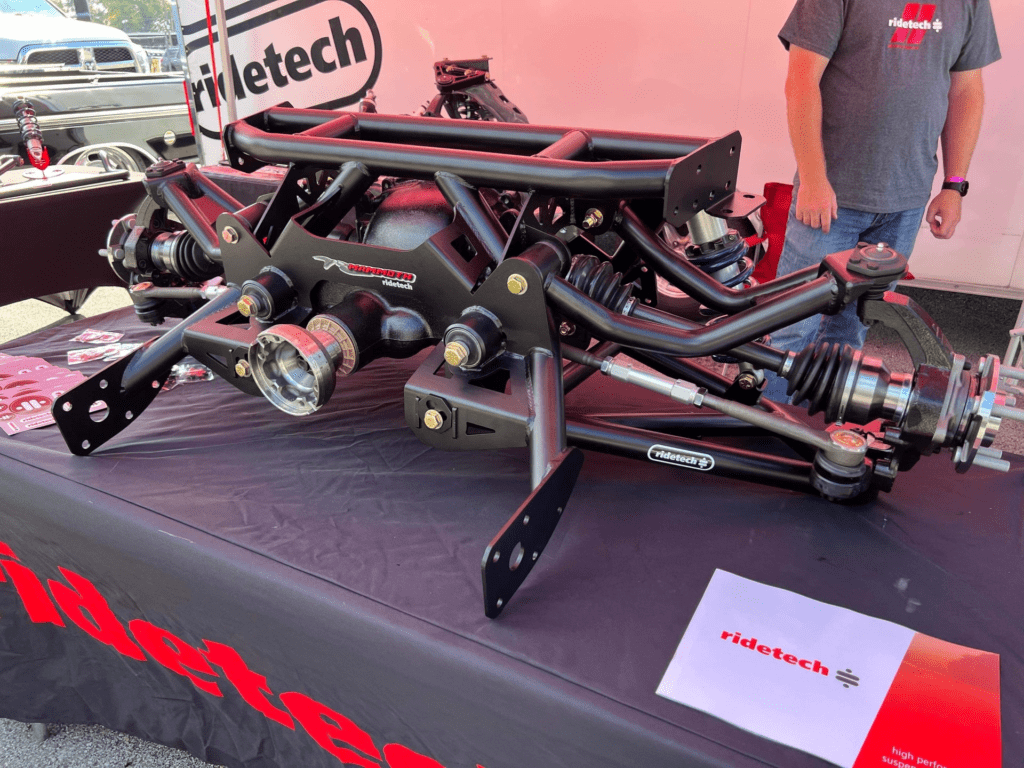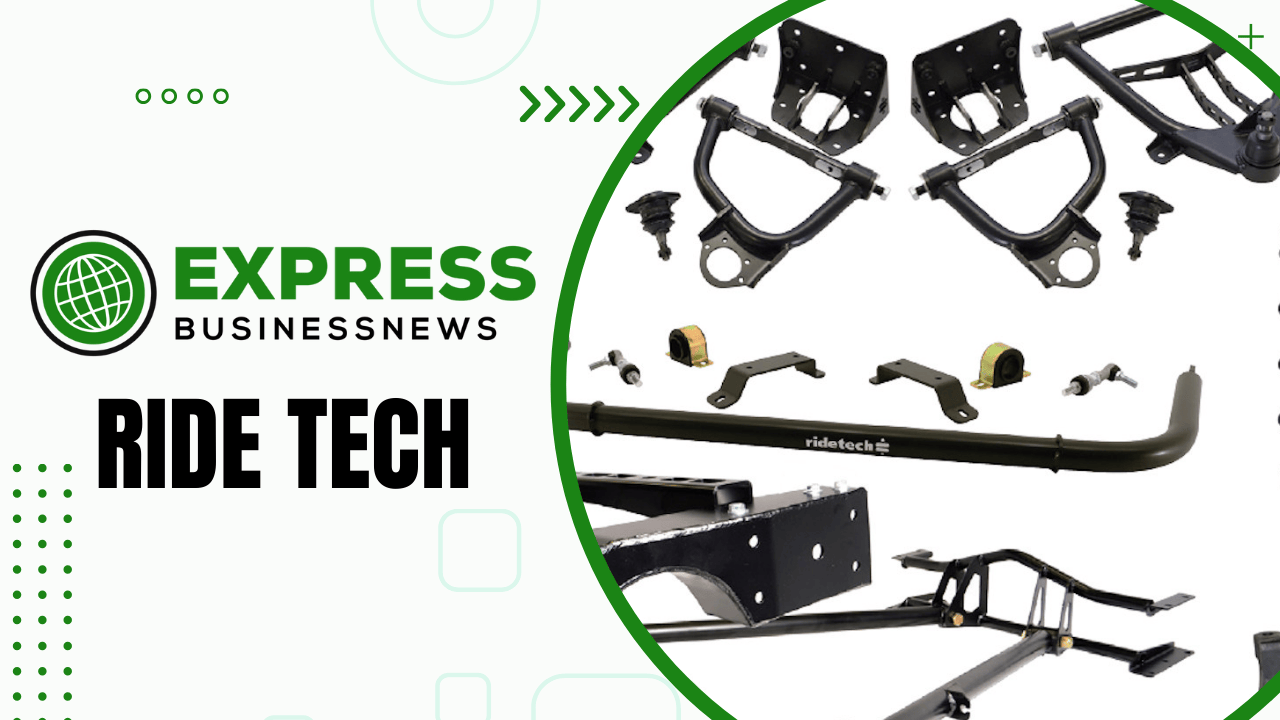Introduction to Ride Tech
Ride Tech represents a pivotal advancement in the transportation industry, leveraging cutting-edge technology to enhance the efficiency, safety, and convenience of modern commuting. This article delves into Ride Tech’s various facets, examining its impact on the transportation sector, the technology behind it, and its potential to shape the future of travel.
The Evolution of Transportation Technology
Transportation technology has evolved significantly over the years, from the advent of the automobile to the integration of intelligent systems in vehicles. Ride Tech continues this progression by introducing innovative solutions that address contemporary transportation challenges. Understanding its historical context helps us appreciate the strides made in recent years.
Critical Components of Ride Tech
Ride Tech encompasses several core components, including:
- Telematics Systems: Advanced systems that provide real-time vehicle performance and location data.
- Autonomous Vehicles: Self-driving technology that aims to improve safety and efficiency.
- Electric Vehicles: Green technology that reduces reliance on fossil fuels and lowers emissions.
- Connected Infrastructure: Integrating transportation networks with intelligent technologies to optimize traffic flow and reduce congestion.
The Role of Telematics in Ride Tech
Telematics systems are central to Ride Tech, offering valuable insights into vehicle operation and driver behavior. These systems collect and transmit data related to speed, fuel consumption, and engine performance, enabling better management of transportation resources.
Autonomous Vehicles: The Future of Driving
Autonomous vehicles represent one of the most groundbreaking aspects of Ride Tech. The development and deployment of autonomous vehicles promise to revolutionize how we travel, making streets safer and more efficient.

Electric Vehicles and Sustainability
Electric vehicles (EVs) are a crucial component of Ride Tech’s commitment to sustainability. By replacing traditional internal combustion engines with electric powertrains, EVs offer a cleaner alternative that reduces greenhouse gas emissions and reliance on fossil fuels. The growing popularity of EVs is driven by advancements in battery technology and increased consumer awareness of environmental issues.
Connected Infrastructure: Enhancing Traffic Management
Connected infrastructure is integrating intelligent technologies into transportation networks to improve traffic management and efficiency. Ride Tech leverages this technology to create intelligent traffic signals, real-time traffic updates, and automated parking systems. These innovations help alleviate congestion, reduce travel times, and enhance the driving experience.
The Impact of Ride Tech on Urban Mobility
Ride Tech profoundly impacts urban mobility, transforming how people navigate cities. With advancements such as ride-sharing apps, electric scooters, and intelligent parking solutions, urban transportation is becoming more flexible and accessible. These technologies address common urban challenges, such as traffic congestion and limited parking, making city travel more convenient.
The Role of Data Analytics in Ride Tech
Data analytics is critical in Ride Tech by providing insights into transportation patterns and performance. Analyzing data from various sources, such as telematics systems and traffic sensors, helps optimize routes, predict maintenance needs, and improve efficiency. This data-driven approach enables more informed decision-making and enhances the effectiveness of transportation systems.
Safety Innovations in Ride Tech
Safety is a top priority in Ride Tech, with numerous innovations designed to protect drivers, passengers, and pedestrians. Advanced driver assistance systems (ADAS), such as automatic emergency braking and lane-keeping assist, contribute to safer driving conditions. Additionally, real-time monitoring and alert systems enhance safety by providing timely information and warnings.
The Influence of Ride Tech on Consumer Behavior
Ride Tech has a significant influence on consumer behavior, shaping preferences and expectations in transportation. The convenience of ride-sharing apps, the appeal of electric vehicles, and the benefits of autonomous driving are changing how people approach travel. Understanding these trends helps businesses and policymakers adapt to evolving consumer needs.
Challenges and Opportunities in Ride Tech
While Ride Tech offers numerous benefits, it also faces challenges that need addressing. Issues such as cybersecurity risks, regulatory hurdles, and the high cost of technology implementation can impact the adoption and effectiveness of Ride Tech solutions.
The Future of Ride Tech: Trends to Watch
The future of Ride Tech is promising, with several emerging trends expected to shape the industry. Key trends include:
- Integration of AI and Machine Learning: Enhancing autonomous driving and predictive analytics.
- Advancements in Battery Technology: Increasing the range and efficiency of electric vehicles.
- Expansion of Smart Cities: Integrating Ride Tech solutions into broader urban planning efforts.
Ride Tech and Environmental Impact
Ride Tech’s focus on electric vehicles and sustainable practices contributes to its positive environmental impact. By reducing emissions and promoting energy-efficient technologies, Ride Tech supports efforts to combat climate change and preserve natural resources. The shift towards greener transportation options aligns with global sustainability goals.
The Role of Government and Policy in Ride Tech
Government and policy play a crucial role in shaping the development and implementation of Ride Tech. Regulations related to autonomous vehicles, electric vehicle incentives, and infrastructure investments influence the growth and adoption of these technologies. Effective policies support innovation while ensuring safety and compliance.
Ride Tech in Different Markets
Ride Tech’s impact varies across different markets and regions. In developed economies, the focus may be on advanced autonomous vehicles and smart infrastructure, while emerging markets might prioritize affordable electric vehicles and basic connectivity solutions. Understanding these market differences helps tailor Ride Tech solutions to diverse needs and conditions.

Collaboration and Partnerships in Ride Tech
Collaboration and partnerships are essential for the advancement of Ride Tech. Industry leaders, technology providers, and policymakers must work together to drive innovation and address challenges. Collaborative efforts can accelerate the development of new technologies and ensure their successful integration into existing systems.
Consumer Feedback on Ride Tech Solutions
Consumer feedback plays a vital role in shaping Ride Tech solutions. Positive reviews highlight the benefits of technology such as improved convenience and safety, while constructive criticism helps identify areas for improvement. Engaging with consumers provides valuable insights that drive continuous enhancement and refinement of Ride Tech offerings.
The Impact of Ride Tech on Business Operations
Ride Tech has a significant impact on business operations, particularly for companies involved in transportation and logistics. Technology such as fleet management systems and route optimization tools enhances efficiency and reduces costs. Businesses that embrace Ride Tech can gain a competitive edge and improve their operational performance.
Ride Tech and the Sharing Economy
The sharing economy is closely intertwined with Ride Tech, with innovations such as ride-sharing platforms and bike-sharing systems revolutionizing how people access transportation. These models offer flexible and cost-effective alternatives to traditional ownership, contributing to more sustainable and efficient transportation options.
The Integration of Ride Tech with Other Technologies
Ride Tech often integrates with other technologies to enhance functionality and user experience. For example, combining Ride Tech with Internet of Things (IoT) devices can create smart transportation ecosystems that provide real-time data and seamless connectivity. This integration amplifies the benefits of Ride Tech and expands its capabilities.
Public Perception of Ride Tech
Public perception of Ride Tech varies, with some embracing the convenience and innovation it offers, while others may have concerns about privacy, safety, and reliability. Addressing these perceptions through transparent communication and effective solutions is crucial for gaining public trust and fostering widespread adoption.
Case Studies of Successful Ride Tech Implementations
Examining case studies of successful Ride Tech implementations provides valuable insights into its practical applications and benefits. Examples include cities that have effectively integrated smart traffic management systems or companies that have successfully deployed autonomous vehicles in their operations. These case studies highlight the potential of Ride Tech to transform transportation.
The Intersection of Ride Tech and Urban Planning
Ride Tech intersects with urban planning in significant ways, influencing how cities design and manage transportation infrastructure. Smart technologies can inform decisions related to traffic flow, public transportation, and land use. Integrating Ride Tech into urban planning efforts helps create more efficient and sustainable cities.
The Role of Innovation in Advancing Ride Tech
Innovation is a driving force behind the advancement of Ride Tech. Research and development efforts focus on creating new technologies, improving existing solutions, and exploring novel applications. The continuous pursuit of innovation ensures that Ride Tech remains at the forefront of the transportation industry.
The Economic Impact of Ride Tech
Ride Tech has a considerable economic impact, contributing to job creation, investment opportunities, and industry growth. The development and deployment of new technologies drive economic activity and create opportunities for businesses and individuals. Understanding the economic implications of Ride Tech helps policymakers and stakeholders make informed decisions.
Ride Tech and Personal Mobility
Personal mobility is greatly enhanced by Ride Tech, with technologies such as electric scooters, bike-sharing programs, and ride-hailing apps offering flexible and convenient transportation options. These innovations cater to diverse needs and preferences, making it easier for individuals to navigate their surroundings.
The Role of Ride Tech in Reducing Traffic Congestion
Ride Tech plays a key role in addressing traffic congestion by optimizing traffic flow and reducing bottlenecks. Technologies such as intelligent traffic signals, real-time traffic updates, and route optimization tools help alleviate congestion and improve overall transportation efficiency.
Ride Tech and Future Transportation Trends
Future transportation trends are closely linked to Ride Tech, with emerging technologies and concepts shaping the next generation of travel. Trends such as autonomous public transportation, advanced electric vehicle charging infrastructure, and integrated mobility solutions are expected to influence the future of transportation.

The Impact of Ride Tech on Rural and Remote Areas
Ride Tech has the potential to impact rural and remote areas by improving access to transportation and expanding mobility options. Technologies such as electric vehicles and telematics systems can enhance connectivity and address transportation challenges in less accessible regions.
Ethical Considerations in Ride Tech Development
The development and deployment of Ride Tech raise ethical considerations related to privacy, security, and equity. Addressing these issues is essential for ensuring that technological advancements benefit all individuals and communities while respecting fundamental rights and values.
The Global Influence of Ride Tech
Ride Tech has a global influence, with innovations and trends spreading across different regions and markets. The exchange of ideas and technologies fosters international collaboration and drives the global evolution of transportation. Understanding the global impact of Ride Tech highlights its significance in shaping the future of travel.
Conclusion: The Future of Ride Tech
Ride Tech represents a transformative force in the transportation industry, offering innovative solutions that enhance efficiency, safety, and sustainability. As technology continues to evolve, Ride Tech will play a crucial role in shaping the future of travel and addressing the challenges of modern transportation. Embracing these advancements promises a more connected, efficient, and environmentally friendly transportation landscape.





